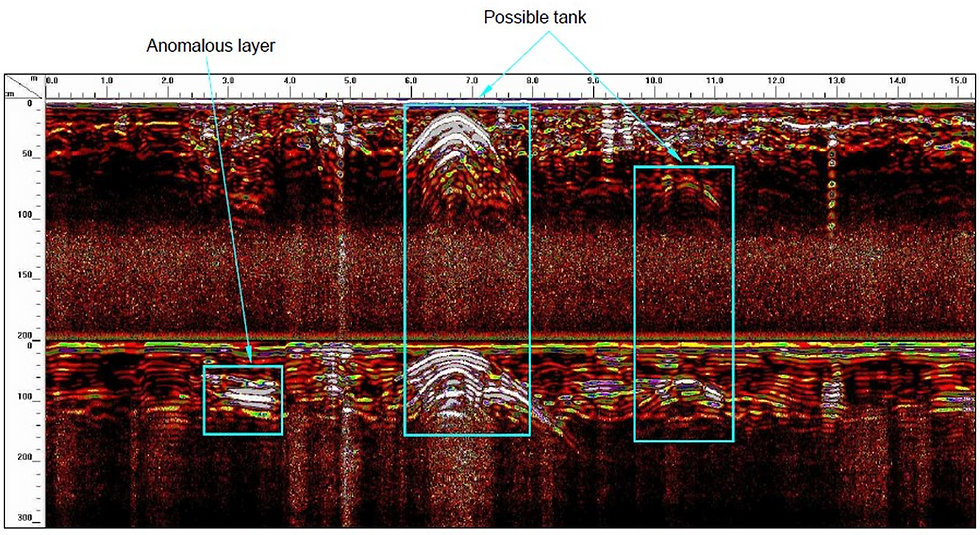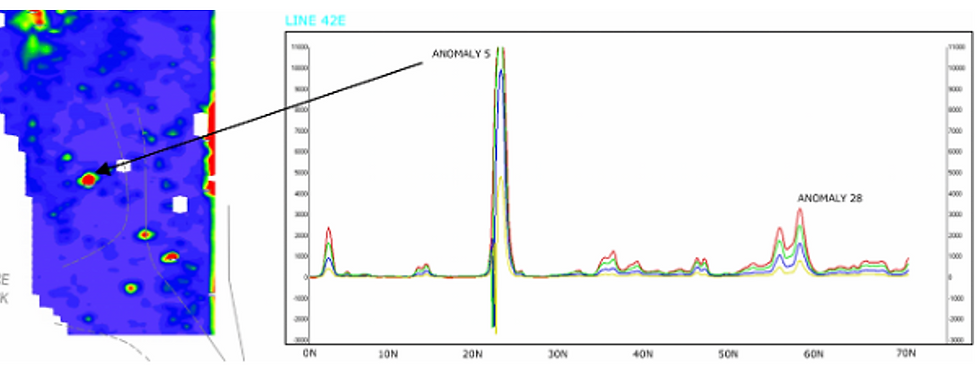Buried Hazards – The UST Problem
- Claire Rose

- Jul 17
- 2 min read
Underground Storage Tanks (UST) are storage containers used to keep often hazardous liquids, buried either partially or completely below ground level. USTs are typically found at numerous locations such as petrol filling stations (PFS), council depots, fire and ambulance stations, military bases, lorry parks and industrial sites.

If no records have been kept a variety of hazards can arise long after the tanks are no longer in use. such as ground contamination, unstable ground and in some cases explosive potential. Knowing the location of a buried tank is consequently fundamental for both health and safety and environmental reasons. This knowledge also informs site development where defunct tanks are suspected to be. Sometimes it’s just a case of knowing where the USTs are or they are still there at all!

Above - 3D rendered image of the GPR survey results presented in CAD. The tanks are visualized along with a service running over the top.
The Answer – A Combined Geophysical Survey
The most suitable technique for detecting tanks on most types of sites is ground penetrating radar (GPR). This works in a wide range of congested environments and can detect tanks made from both metallic and non-metallic materials, as well as provide burial depth information to top of the tank.

Above - Example GPR radargram (section view). Two anomalies can be seen showing the location of two fuel tanks.

Above Left – Interpretation of GPR data in plan view showing 3 tanks (A-C) at 0.5m depth. Above Right – Timeslice (plan view) showing 3 adjacent tanks.
Other supporting techniques that can be used are magnetometry and ground conductivity depending on the site conditions and the materials from which the tank has been made. These techniques are lower resolution, but more cost effective, enabling large areas to be surveyed, with specific areas then targeted with GPR for improved accuracy and depth information.

Above – Ground Conductivity data in Plan and section view showing 4 possible tanks showing the amplitude of response.
All three techniques can be carried out on-site on the same day. Immediate initial results may be presented on-site, with full interpretation of the data produced in an engineering compatible format shortly afterwards to suit your timescale.








